Olde English Bulldogge vs. Eskland: Breed Differences and Similarities
Hypoallergenic
Are Olde English Bulldogges or Esklands hypoallergenic, or neither?
Unfortunately, neither Olde English Bulldogge nor Eskland are hypoallergenic, which may not make them the best choice for dog lovers who suffer from pet allergies.
Temperament
What are the personalities of Olde English Bulldogge and Eskland dogs?
Alert
Courageous
Friendly
Confident
Loving
Strong
Playful
Independent
Energetic
Protective
Alert
Intelligent
Friendly
Responsive
Affectionate
Lively
Gentle
Shedding Level
Do Olde English Bulldogges shed more than Esklands, or which breed sheds more, Olde English Bulldogges or Esklands?
Olde English Bulldogges are moderate shedders, but regular brushing can reduce shedding and maintain coat health.
Esklands are heavy shedders, but regular brushing can help manage shedding and promote a healthy coat.
Watchdog Ability
Which dog breed makes a better watchdog, the Olde English Bulldogge or Eskland?
Olde English Bulldogges make excellent watchdogs - they're vocal and protective of their territory.
Esklands aren't great guard dogs; they tend to just watch without taking action.
Origin
What is the origin of Olde English Bulldogge and Eskland dog breeds?
United States
United States
Ancestry
What are the origins of Olde English Bulldogge and Eskland breeds?
English Bulldog, American Bulldog, American Pit Bull Terrier, Bull Mastiff
American Eskimo and Shetland Sheepdog
Date of Birth
When were Olde English Bulldogge and Eskland breeds first developed?
1971
Unknown
Eye Color Possibilites
What are the eye colors of Olde English Bulldogge and Eskland dogs?
Brown
Amber
Brown
Nose Color Possibilites
What are the natural nose colors of Olde English Bulldogge and Eskland?
Black
Black
Coat Color Possibilites
What are the natural colors of the coat for Olde English Bulldogge and Eskland breeds?
Brindle
Gray
Fawn
Red
Brown
Pied
Brown
Gray
White
Cream
Coat Length
What is the typical coat length for Olde English Bulldogge and Eskland breeds?
Olde English Bulldogges have coats that can be either short or medium in length.
Esklands have longer coats compared to most dogs.
Coat Density
What is the density of the coat of Olde English Bulldogge and Eskland?
Coat Texture
What is the hair texture of Olde English Bulldogge and Eskland?
Straight
Litter Size
What is the usual litter size for Olde English Bulldogge and Eskland?
An Olde English Bulldogge can have a litter of 11-13 puppies on average. However, it's worth noting that the size of the litters can vary greatly. Factors that can influence litter size include the health of the mother, breeding history, and genetics.
An Eskland can have a litter of 4-6 puppies on average. However, it's worth noting that the size of the litters can vary greatly. Factors that can influence litter size include the health of the mother, breeding history, and genetics.
Adaptability
Olde English Bulldogges are highly adaptable and versatile, making them excellent companions for families and individuals of all lifestyles.
Esklands are known for their adaptability and can adjust well to different environments and lifestyle changes.
Health Issues
Between Olde English Bulldogge and Eskland, which breed is more prone to health problems?
Olde English Bulldogge and Eskland breeds are generally considered to be healthy. However, like all breeds, they are susceptible to certain health issues and it is important to keep an eye out for them and address them with your veterinarian as needed.
Major Concerns
What are the major health concerns for Olde English Bulldogge and Eskland breeds?
Bloat
Hip Dysplasia
Dermatomyositis
Von Willebrand's Disease
Pancreatitis
Minor Concerns
What minor health issues should be kept in mind when owning Olde English Bulldogge and Eskland?
Hip Dysplasia
Cataracts
Retinal Dysplasia
Hypothyroidism
Atopy Dermatitis
Occasional Tests
What occasional tests are recommended for Olde English Bulldogge and Eskland breeds?
X-Rays
Physical Examination
Eye Examination
Physical Examination
Radiographs
Energy
How do the energy levels of Olde English Bulldogges and Esklands compare?
Olde English Bulldogges are a good choice for a low-key lifestyle due to their low energy levels.
Esklands' high energy levels make them unsuitable for a low-key dog, choose accordingly.
Social Needs
Olde English Bulldogge vs Eskland social needs comparison
Olde English Bulldogge has above average social needs and thrives with interaction with humans and other dogs.
Eskland has very high social needs and requires regular mental and physical stimulation, a job or purpose, and companionship.
Exercise Needed
Olde English Bulldogge vs Eskland exercise need comparison.
Olde English Bulldogges need only a small amount of physical activity, ideal for busy or elderly people or those with limited space.
Esklands need moderate physical activity and are great for families and active individuals.
Sleeping Need
Which of the two sleeps the most/least: Olde English Bulldogge or Eskland?
Olde English Bulldogges are known for their relaxed and calm nature and enjoy long periods of sleep.
Esklands sleep less than other breeds but still need adequate sleep for good health.
Tendency to Bark
Do Olde English Bulldogges or Esklands bark more/less frequently?
Olde English Bulldogges are typically quiet and only bark when needed, such as to alert their owner or when in distress.
Esklands bark moderately when necessary and may also bark due to certain triggers like fear, alarm, boredom, greeting, separation anxiety and compulsive barking.
Mouthiness
Mouthiness Comparison: Olde English Bulldogge vs Eskland?
Roaming urge
Olde English Bulldogge vs Labrador: Running away tendency?
Prey Drive
Olde English Bulldogge or Eskland - which breed has a higher level of prey drive?
Past times
What are some enjoyable activities and ways to keep Olde English Bulldogge and Eskland entertained?
Camping, Tug-of-war, Nap, Tricks & Trai, Bath time, Cuddling, Car rides, Walks, Walk, Sleep, Car ride, Cuddl, Playing, Soccer, Training, Swimming, Fetch, Dog Parks, Keep away, Water play, Road trip
Fetch, Hike, Walk, Playing, Walking, Loves snow, Needy, Farm work, Run, Road trip, Swim, Catch treats, Play keep away, Wrestling, Tug-of-war, Hide & Seek, Dance, Shake, Puzzle Toys, Tag, Trampoline
Activity Level
Which breed has higher energy, Olde English Bulldogges or Esklands?
Olde English Bulldogges are medium-energy dogs and typically enjoy socializing and playing casual or even sustained games of chase with other dogs. They may also have occasional periods of barking or racing around the house.
Esklands are high-energy dogs. They need mental as well as physical exercise. These dogs require a lot of your involvement and without it they can, and will, become problematic dogs.
Tolerance of being left alone
Walks per Week
How many miles should Olde English Bulldogge or Eskland walk each week?
There's really no limit to how far you walk your dog as long as they're comfortable. For Olde English Bulldogge, it's at least 14 miles / week. Just remember to build distance and stamina gradually over time.
There's really no limit to how far you walk your dog as long as they're comfortable. For Eskland, it's at least 10 miles / week. Just remember to build distance and stamina gradually over time.
Activity per Day
Do Olde English Bulldogges or Esklands require more exercise?
In general most Olde English Bulldogges usually need at least 45 minutes of exercise daily. This can be spread across the day and include all sorts of high-energy activities, like walking, running and playing.
In general most Esklands usually need at least 120 minutes of exercise daily. This can be spread across the day and include all sorts of high-energy activities, like walking, running and playing.
Grooming
Which breed is easier to maintain in terms of grooming, Olde English Bulldogges or Esklands?
The Olde English Bulldogge is a low-maintenance breed that doesn't require much grooming.
Esklands require significant grooming, including regular trims and professional grooming assistance to maintain their coat. They may also require frequent bathing to keep their coat and skin healthy.
Brushing Frequency
What is the recommended brushing frequency for Olde English Bulldogge and Eskland dogs?
Olde English Bulldogge should be brushed at least once a week. Of course you can give them more frequent brushes if you find that they are still shedding a lot
Ideally, Eskland should be brushed at least 2 or 3 times a week (preferably daily) improve shedding.
Brushing Tools
What brushing tools are used for Olde English Bulldogges and Esklands?
Slicker Brush
Nail Clipper
Pin Brush
Slicker Brush
Deshedder
Nail Clipper
Cups
How much food should be given to Olde English Bulldogge or Eskland in cups?
For an average 60-80 pound (27 - 36 kg) Olde English Bulldogge feed 3 cups daily. But, keep in mind, the amount you feed is going to be dependent on the quality of the food you are feeding.
For an average 12-18 pound (5 - 8 kg) Eskland feed 1 cups daily. But, keep in mind, the amount you feed is going to be dependent on the quality of the food you are feeding.
Daily Cost
Which breed has a higher daily cost, Olde English Bulldogge or Eskland?
The average cost of an Olde English Bulldogge is somewhere $2.10 - $2.80 per day.
The average cost of an Eskland is somewhere $1.10 - $1.40 per day.
Monthly Cost
Which breed has a higher monthly cost, Olde English Bulldogge or Eskland?
The average per month expenses of an Olde English Bulldogge is between $63 - $84. This makes an average of $756 - $1008 per year. It will be on the higher side when the dog is still small because it will need more frequent visits to the vet, shots.
The average per month expenses of an Eskland is between $35 - $42. This makes an average of $420 - $504 per year. It will be on the higher side when the dog is still small because it will need more frequent visits to the vet, shots.
Intelligence
Comparing Intelligence: Olde English Bulldogges vs Esklands
Olde English Bulldogges are average in obedience intelligence but have a high IQ and may cause trouble if left unsupervised.
Eskland is a very intelligent and trainable breed.
Sensitivity Level
How do Olde English Bulldogge and Eskland compare in sensitivity?
This breed is sensitive and requires gentle handling and a calm home environment.
This breed is sensitive to its environment and best suited for patient and understanding families with a consistent routine.
Affection Dependance
Which is the more affectionate dog breed: Olde English Bulldogge vs Eskland?
Apartment Friendly
Which breed is more apartment-friendly: Olde English Bulldogge or Eskland?
Olde English Bulldogges make excellent apartment dogs, being fairly active indoors and not requiring a yard.
The Eskland is a great apartment dog, thriving with sufficient exercise and time outside as part of their daily routine.
Child Friendly
Do Olde English Bulldogges or Esklands have a friendlier temperament towards children?
Olde English Bulldogge and Eskland are kid-friendly dogs. They are good with children and excellent dogs with children if they are socialized and trained at a young age.
Senior-friendly
Which dog is more suitable as a pet for the elderly - Olde English Bulldogge or Eskland?
Cat Friendly
Do Olde English Bulldogge or Eskland breeds have a better compatibility with cats?
Olde English Bulldogges are average in their friendliness toward cats and tend to do well with them, especially if raised together.
Esklands are good with cats, but early training is needed to prevent chasing behavior.
Dog Friendly
Which breed is more sociable with other dogs: Olde English Bulldogge or Eskland?
Olde English Bulldogges are average in their friendliness towards other dogs, and socialization can help.
Esklands are friendly and active companions, and can be good family pets, though their friendliness towards other dogs may vary.
Pet friendly
How do Olde English Bulldogge or Eskland dogs interact with other pets?
Stranger Friendly
Which breed is more friendly with strangers: Olde English Bulldogge or Eskland?
Olde English Bulldogges are averagely friendly around strangers but benefit from early socialisation.
Esklands are quick to announce strangers and can be standoffish or suspicious.
Playfulness
Which breed is more playful between Olde English Bulldogge and Eskland?
Olde English Bulldogges are not known for being a highly playful breed.
Esklands are a playful breed that needs daily playtime to be happy.
Trainability
How do the trainability levels of Olde English Bulldogges and Esklands compare?
Olde English Bulldogges may require more time and patience to learn commands, but with consistency, they can be trained.
Esklands are popular for their ease of training and quick learning ability.
Compare Olde English Bulldogge with other breeds
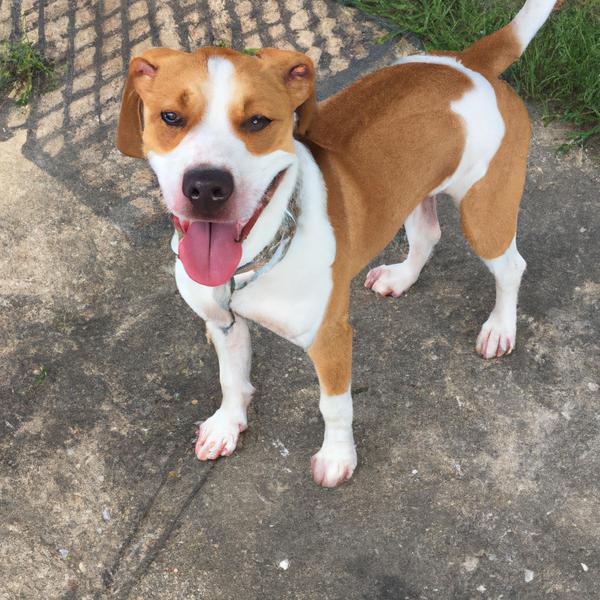
Beagle Pit
Olde English Bulldogge vs Beagle Pit
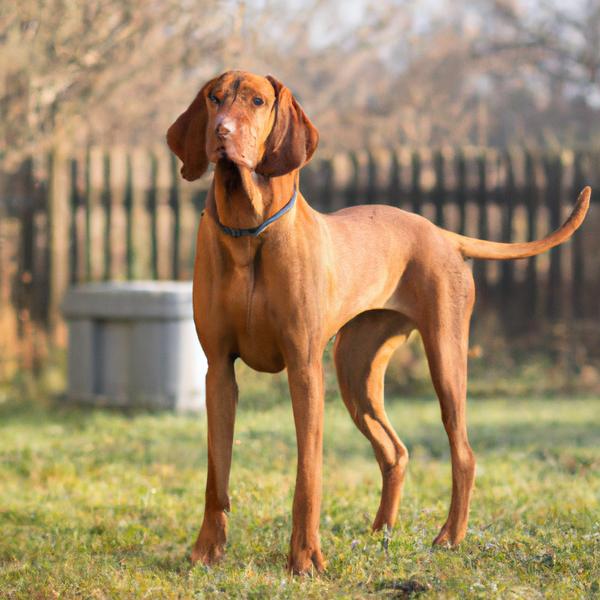
Transylvizsla Hound
Olde English Bulldogge vs Transylvizsla Hound
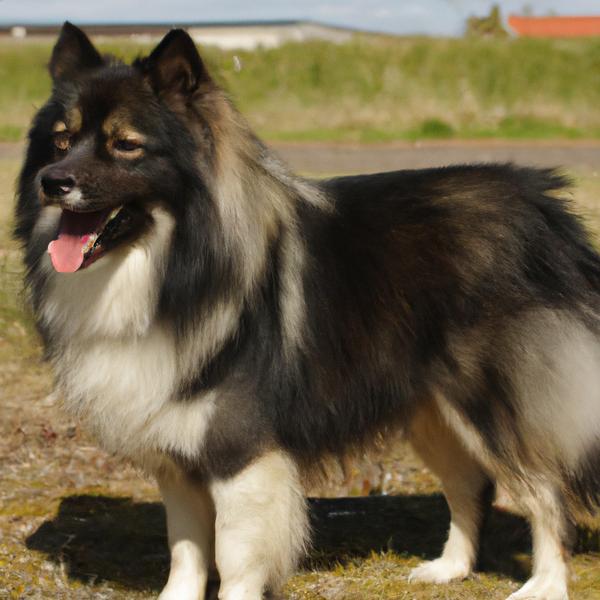
Eskland
Olde English Bulldogge vs Eskland
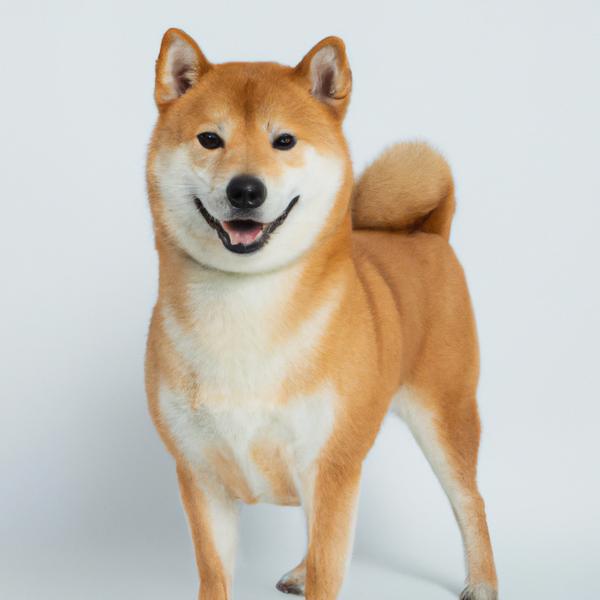
Siberian Shiba
Olde English Bulldogge vs Siberian Shiba
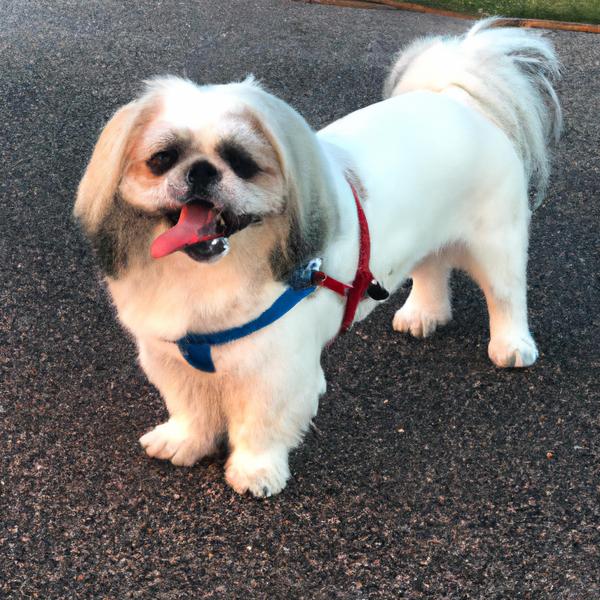
Silkytie
Olde English Bulldogge vs Silkytie
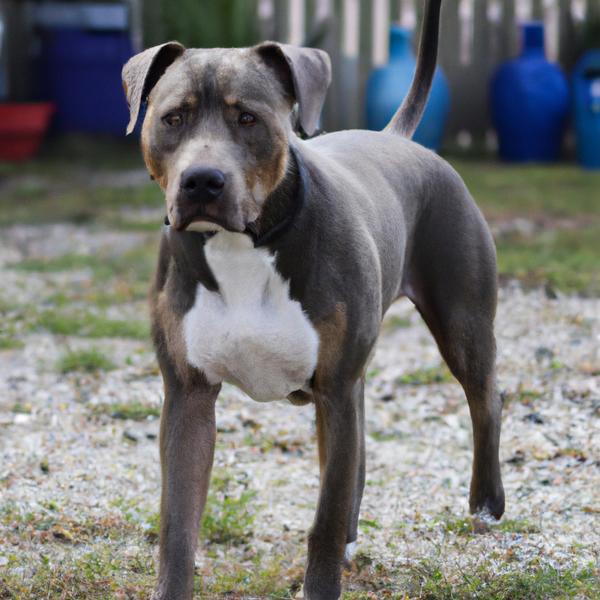
Greybull Pit
Olde English Bulldogge vs Greybull Pit

Leonberger
Olde English Bulldogge vs Leonberger
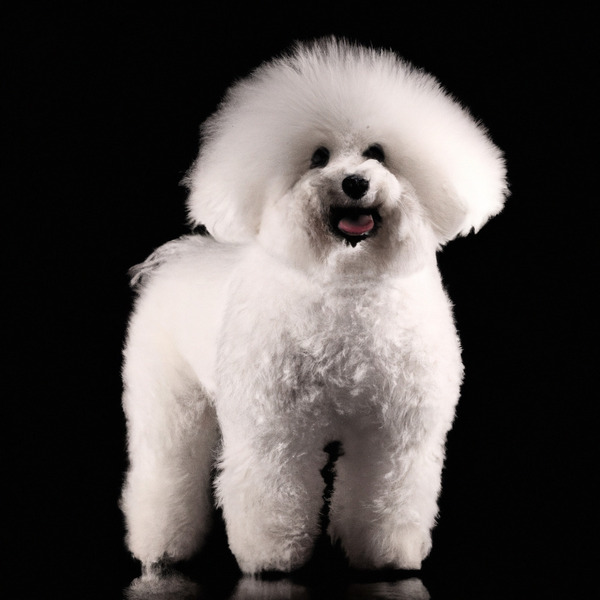
Bolognese
Olde English Bulldogge vs Bolognese
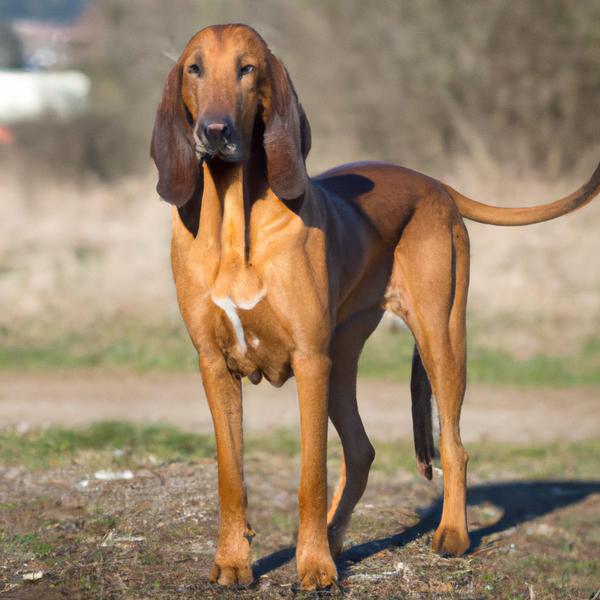
Labloodhound
Olde English Bulldogge vs Labloodhound
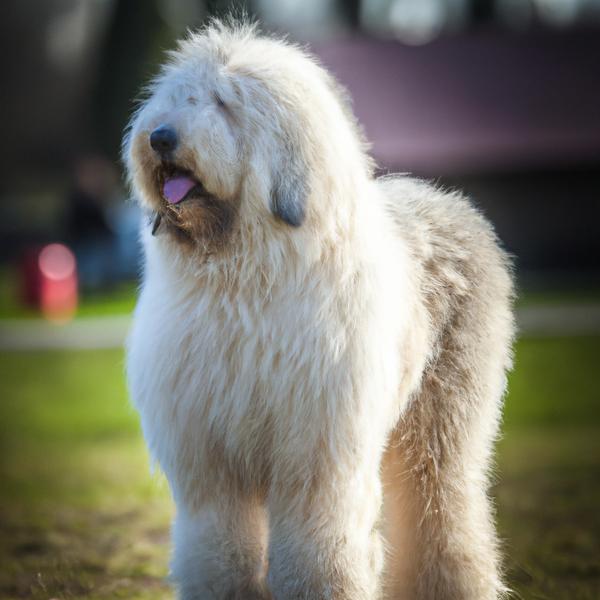
Komondor
Olde English Bulldogge vs Komondor
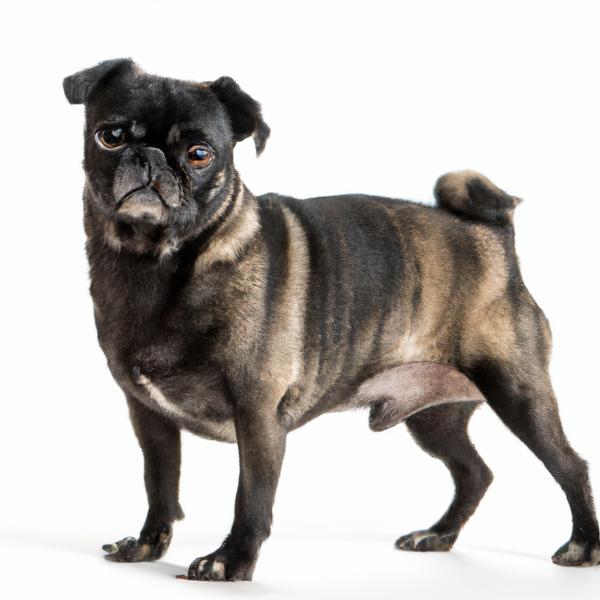
Pugillon
Olde English Bulldogge vs Pugillon
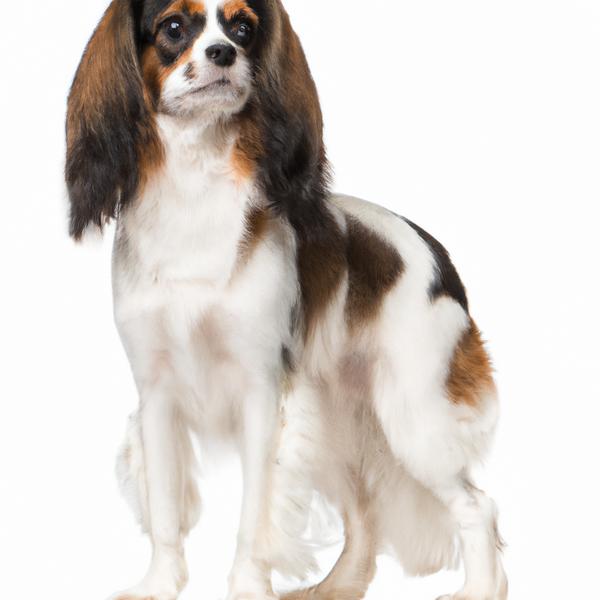
English Toy Spaniel
Olde English Bulldogge vs English Toy Spaniel
